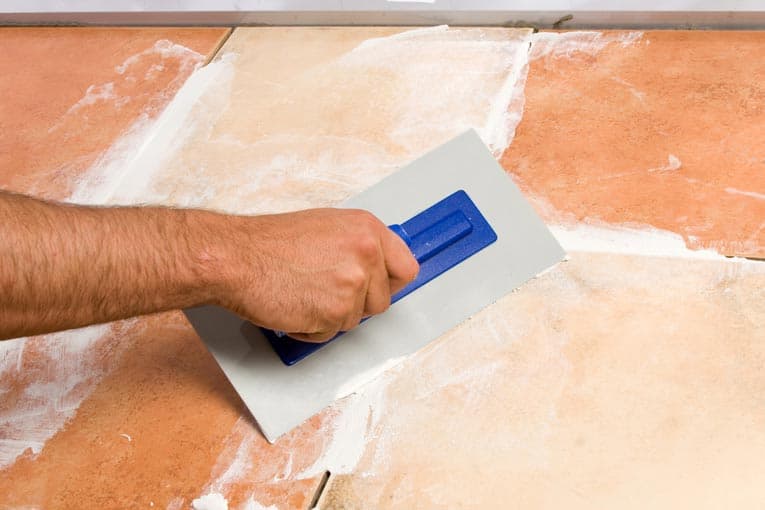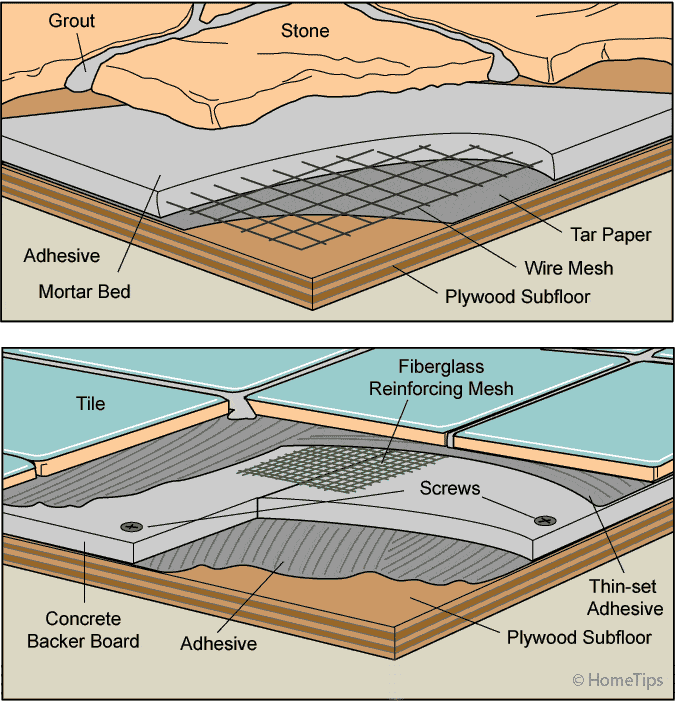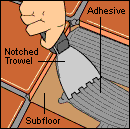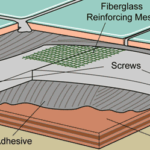Learn how to install ceramic and stone tile floors with this expert DIY guide, which explains concepts related to tiling over surfaces with helpful diagrams.
Installing a ceramic or stone tile floor can be a challenging job for the novice but, when done correctly, results in a beautiful floor that can last for decades. Before beginning an installation project, please be sure to read the overview article, Tile, Stone & Grout.
Tile and stone can be laid over a variety of existing flooring materials. If you currently have vinyl or ceramic flooring, you can remove the existing flooring material, tile over the old floor, or lay backerboard directly over a vinyl floor and then install the new tiles on it.
The one big caveat is this: Make sure the subflooring is adequate to support the weight of the new floor. If it gives or deflects when you jump on it, your new tile floor is likely to crack, so you’ll need to beef-up the structure before installing tile or stone. Adding a second layer of plywood over the subfloor is one way this can be done—just be aware that this, in addition to the surface materials, will raise the floor level.
Tiling Over Vinyl or Resilient Flooring
Resilient flooring may be made from a variety of materials, including vinyl, asphalt, linoleum, and rubber. You can lay stone or ceramic tile directly over resilient flooring if it is smooth and does not have another layer of flooring or cushioning underneath it. Glossy surfaces need to be scuffed with a sanding block for the thinset to adhere.
If you need to remove the old flooring, use a scraper or a prybar and hammer if it is stubborn (however, if it is asbestos-based flooring, call in a professional removal company). You can also soften the adhesive to facilitate removal using a hot iron. Place a cloth over the flooring and iron back and forth for about 10 seconds. Repeat the process if the flooring still doesn’t come up easily.
Tiling Over Stone or Ceramic Tile
Before you decide to tile over existing stone or ceramic tile, consider this: You will be adding significantly to the height of the floor, which will affect the transitions from one room to another. If this doesn’t matter, you will be able to save on the labor of ripping out the old floor.
If you want to install new stone or ceramic tile on top of old tiles, first make sure the existing tiles are securely attached. Use a tile stone, grinder, or belt sander to scuff glazed tile or the thinset will not adhere properly.
Before setting any tile, lay out the new tiles on top of the old to see how they will sit. Use thinset in the old grout lines to level uneven areas, and allow it to dry completely before proceeding.
If you must remove the old tiles before laying the new floor, you will need a cold chisel and hammer, particularly if they were set in mortar.
How to Tile a Floor, Step-by-Step
Tiling a floor involves several stages, as discussed in the following articles. Please follow these in order:









 Don Vandervort writes or edits every article at HomeTips. Don has:
Don Vandervort writes or edits every article at HomeTips. Don has:




